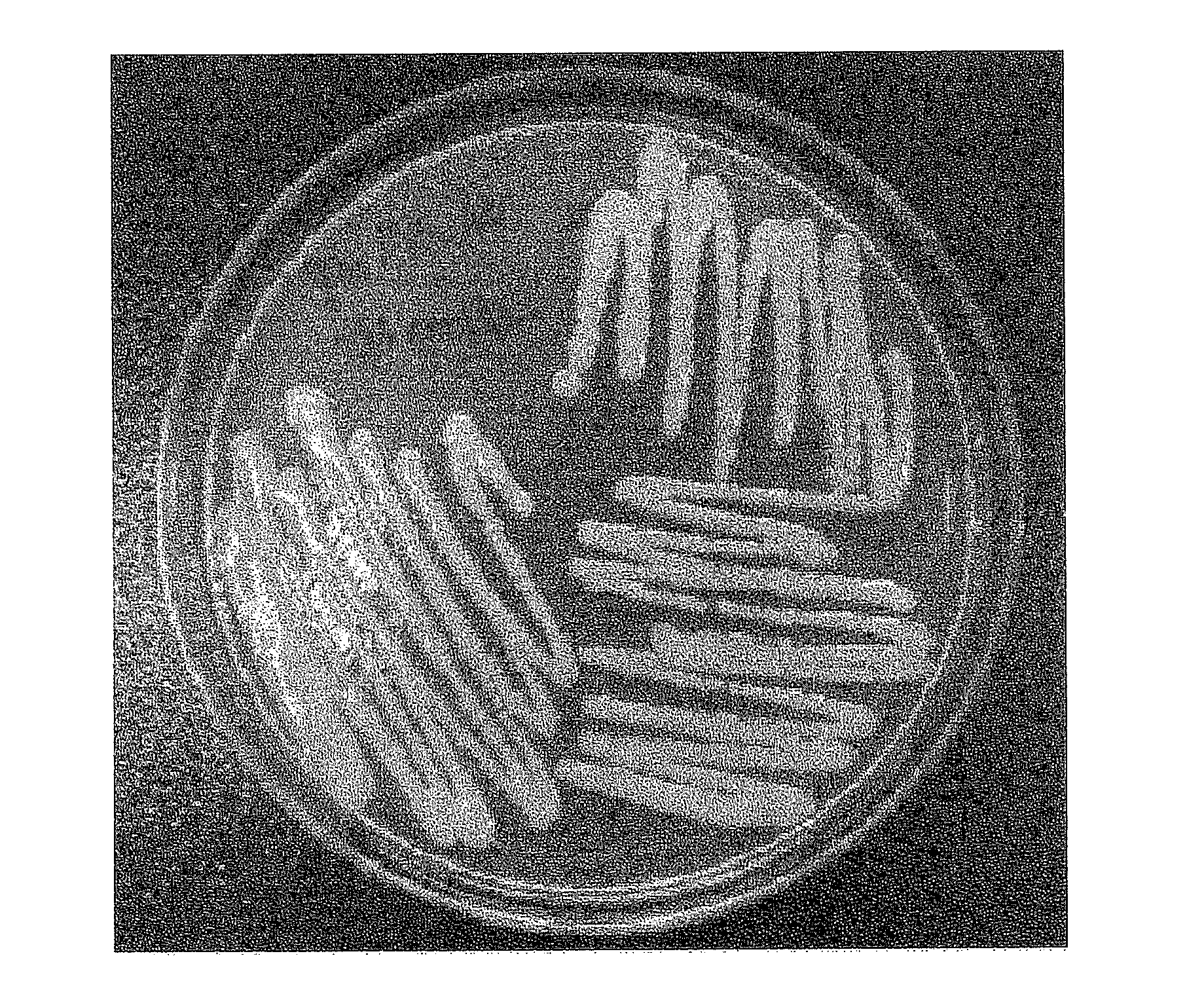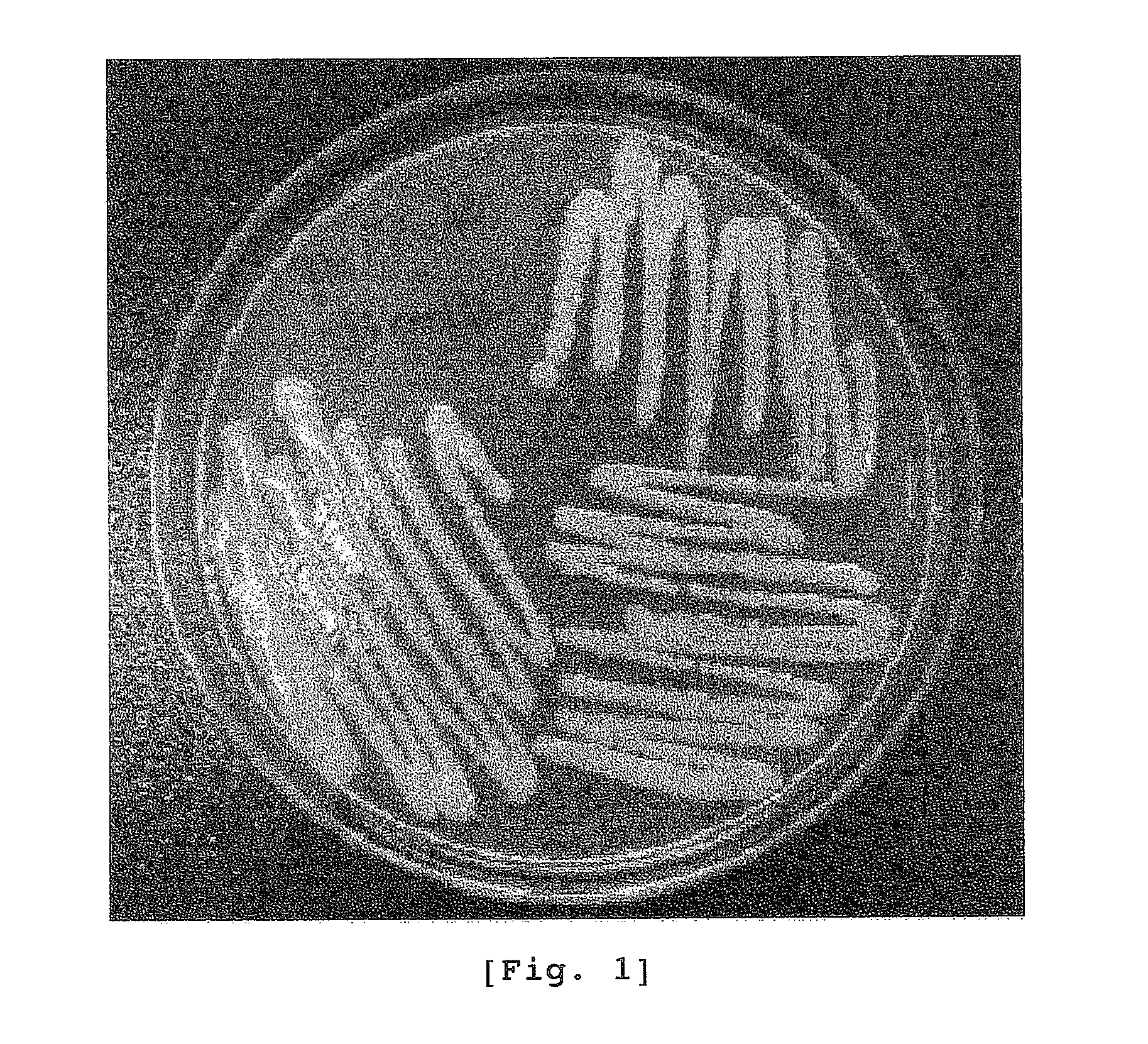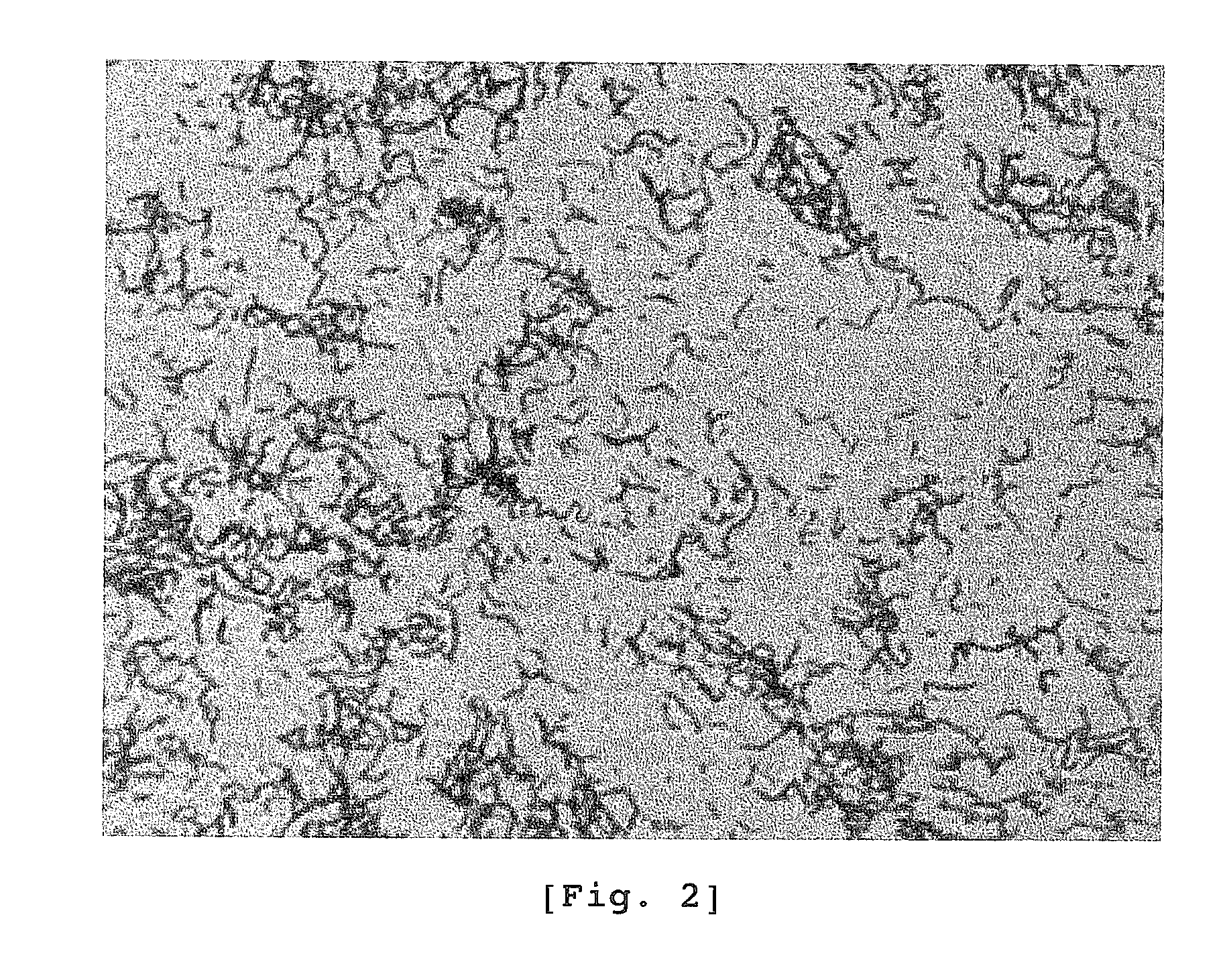The co-culture method of sphingomonas sp. bacterial strain and aspergillus sp. fungus strain, new Anti-cancer and antibiotic glionitrins derived from this co-culture method, and pharmaceutical composition containing glionitrins or pharmaceutically acceptable salt thereof as an active ingredient
a co-culture method and bacterial strain technology, applied in the field of co-culture methods of sphingomonas sp. bacterial strain and aspergillus sp. fungus strain, can solve the problems of taking so much time, cost and labor for repeated separation processes from base materials, and achieve the effect of strong cytotoxic effect on cancer cells and effective use for developmen
- Summary
- Abstract
- Description
- Claims
- Application Information
AI Technical Summary
Benefits of technology
Problems solved by technology
Method used
Image
Examples
example 1
Screening and Selection of Bacterial and Fungus Strains for Co-Culture
[0081]The present inventors collected water of pH 3.0 from the inside of Imgok Mine, Gangneung-si, Gangwondo, Korea and performed centrifugation to give precipitate. The precipitate was suspended and diluted in saline and the diluted precipitate was inoculated on YM agar medium (YMA) and Capex-Dox agar medium (CDA), followed by culture at 25° C. for 10 days. Single strain was separated and thereby 300 strains were obtained. Among them, bacterial and fungus strains to be used for co-culture were selected, which were then inoculated in Capex-Dox liquid medium, followed by culture in a 25° C. shaking incubator for 5-7 days. Chromosomal DNA of the obtained strain was separated and 16S rDNA sequencing was performed to identify the strain. As a result, the strain KMK-001 had 98.0% homology with Sphingomonas sp. A1XXyl1-5, suggesting that it was a novel strain of Sphingomonas. KMK-001 formed yellow mucous colonies in Cap...
example 2
Co-Culture of the Novel Sphingomonas Sp. KMK-001 and Aspergillus Sp. Strain KMC-901
[0083]The present inventors inoculated the novel bacterial strain KMK-001 and fungus strain KMC-901 respectively in Capex-Dox liquid medium, followed by culture in a 25° C. shaking incubator for 3 days. The said two strains were cultured in 1 l Erlenmeyer flasks containing 0.5 l of Capex-Dox liquid medium for mass-production. 2 days later, 250 μl of the fungus strain KMC-901 culture solution was added to the Sphingomonas sp. strain KMK-001 culture solution, followed by co-culture. The co-culture solution containing those strains was observed under microscope. As shown in FIG. 5, bacterial strain was shown along with the fungus strain around the mycelium (see FIG. 5).
[0084]Production of a new compound in the co-culture solution was investigated by HPLC. HPLC was performed under the following conditions; [device: Agilent 1100 LC / MS system; elution speed: 0.7 mL / min; eluent: acetonitrile content was rais...
example 3
Separation and Purification of Glionitrin
[0085]The present inventors extracted organic compounds from the culture solution obtained in Example 2 using ethyl acetate. The extract was dried under reduced pressure at 30° C. using a rotary vacuum evaporator and the resultant extract proceeded to reversed phase column chromatography, and as a result, 6 fractions were obtained. Water and acetonitrile were used for elution. Precisely, elution was started with 20% acetonitrile / water and the content of acetonitrile was raised 20% every time. 100% methanol was used as the final solvent. The obtained fractions were analyzed by HPLC and as a result, the novel glionitrin was confirmed in 60% acetonitrile / water fraction. The fraction was purified by normal phase liquid chromatography using ethyl acetate and methylene chloride as solvents under isocratic condition of 90% methylene chloride / ethyl acetate and 60% methylene chloride / ethyl acetate. Glionitrin A was obtained from the fraction of retent...
PUM
| Property | Measurement | Unit |
|---|---|---|
| pH | aaaaa | aaaaa |
| retention time | aaaaa | aaaaa |
| temperature | aaaaa | aaaaa |
Abstract
Description
Claims
Application Information
 Login to View More
Login to View More - R&D
- Intellectual Property
- Life Sciences
- Materials
- Tech Scout
- Unparalleled Data Quality
- Higher Quality Content
- 60% Fewer Hallucinations
Browse by: Latest US Patents, China's latest patents, Technical Efficacy Thesaurus, Application Domain, Technology Topic, Popular Technical Reports.
© 2025 PatSnap. All rights reserved.Legal|Privacy policy|Modern Slavery Act Transparency Statement|Sitemap|About US| Contact US: help@patsnap.com



